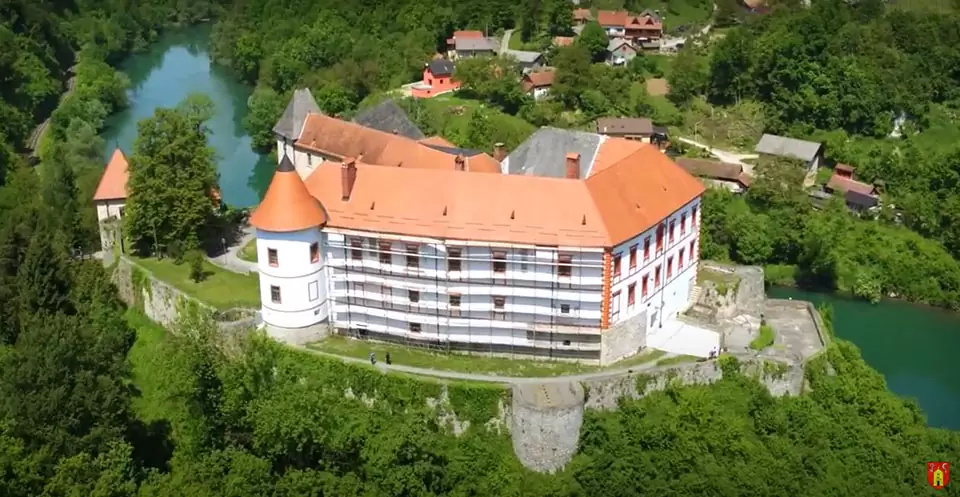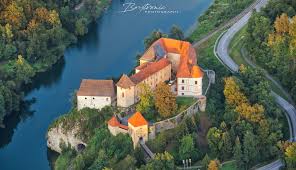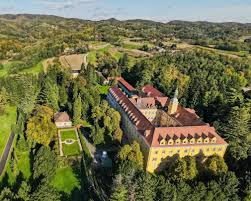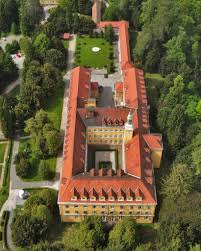Croatian Castles: A Journey Through History, Legends & Timeless Landscapes — Part Two
- Teo Drinkovic
- 7 hours ago
- 6 min read
Exploring the Hidden Cultural Heritage of Croatia’s Castles: Ozalj & Klenovnik

Introduction
After recently telling you the story of Croatia’s castles and covering the majestic Trakošćan Castle and Veliki Tabor, two of the most famous castles in the country, I came to realize that simply wasn’t enough. With the sheer number of castles in Croatia, each beautiful in its own way, each harbouring its own unique stories and legends, choosing just two more was no small task.
But after a bit of serious thinking, the dice dropped on Ozalj Castle and Klenovnik Castle, both rich in history and beautiful in their own right. I decided on these two because I’ve personally visited them, so I could see their splendor firsthand. Now, without further ado, let’s embark on a journey through history, myth, legend, and the stunning architecture each of these castles hides within itself.
Ozalj Castle
Perched on a cliff above the left bank of the Kupa River, in the historic core of the town of Ozalj, lies a castle that holds the layered history of Croatia: Ozalj Castle.
Its foundations are almost as old as the continuity of governance in this part of Europe, and its walls have survived Illyrian threats, Roman overseers, noble families, hidden treasures, and terrifying legends whispered through the centuries.
History & Construction of Ozalj Castle
The first written trace of Ozalj dates from 1244, when the place is referred to in documents as a free royal town.
On the spot where the castle stands today, there was earlier a fortress whose role was to control the Kupa valley road, not only as a natural boundary but as a living trade channel, communication route, and a threat from outside. Go to Croatia
During the early Middle Ages, the castle belonged to the noble family Babonić, later passed into the hands of the mighty Frankopan, and then the well‑known Croatian family Zrinski. The transition happened especially in the 16th and 17th centuries when the Zrinski family developed not only governance and power at Ozalj, but cultural activity too. Go to Croatia
Artefacts in the museum of Castle Ozalj, Croatia
Source: Google.com
Construction-wise, the castle began as a defensive fortress aimed at controlling the Kupa valley and protecting from incursions, whether from the Ottomans or external noble interests. During the 16th century, it was updated into a noble residence: walls expanded, interiors improved, a library formed, and Glagolitic inscriptions decorated the walls. croatia4me.com
Significance & Importance of Ozalj Castle
Geographically, Ozalj Castle’s position is almost ideal for a fortress, and its strategic importance cannot be understated. Built on a rock above the river, it held a visible and strong vantage point over the area that connects inner Croatia with the coast and major river flows.
That allowed both oversight and rapid defence, as well as the development of noble administration. Historically, Ozalj played a role in the chain of defence of nobility against Ottoman advances. Although not front‑line in many instances, its internal position and noble power made it key.
From a cultural‑political viewpoint, Ozalj was where various cultural and political currents met. Frankopan and Zrinski used it as their base, creating literature, music, and even secret networks. Today, as a tourist destination, the castle attracts visitors not just as an architectural monument but as a place where history, architecture, and nature merge, and you’ll hold your breath when you look out over the Kupa from the castle.
Perched on a cliff above the left bank of the Kupa River, lies a castle that holds the layered history of Croatia: Ozalj Castle
Source: Google.com
My Personal Experience with Ozalj Castle
Today, Ozalj Castle has been partly transformed into a museum and is open to the public for exploration. I visited with my wife and friends several times, and I can recommend it as a really nice and pleasant experience. Though the castle could be restored better, one must give credit to the volunteers and donors, because the majority of reconstruction funds come through donations.
The museum comprises several epochs, from prehistory and antiquity, through the Middle Ages and modern times. The artifacts are mostly authentic, and it’s really cool to see them—even if some uniforms are replicas (since clothing/footwear through centuries decays and is hard to preserve). All in all, you’ll see a neat exhibition.
The most beautiful part of the castle is, of course, its stunning view over the Kupa River from its towers and ramparts, and the passage across the wooden bridge which spans the chasm in front of the entrance and main gate of the castle.
Legends & Myths
Around Ozalj Castle, as around any castle, many myths and legends have spun themselves into the local folklore, passed down from generation to generation around hearth fires. The best known is the legend about witches and “witch business”, since the area around Ozalj in that time was known as a place where witches gathered and cast spells.
Sadly for the inquisitors of the time, the “witches” were often herbalists and other women who practiced “pagan” healing and medicine, or self‑aware young women who refused to be servants in the male‑dominated world of the nobility and church.
Being an advanced woman in that time or knowing the secrets of herbalism/natural medicine was extremely dangerous and often led to the stake.
Or, as historian Emil Laszowski mentions, in Ozalj already in the early 20th century, lived the stories that on the small island on the Kupa at night, witches gathered and “rode in carriages”. histouring.com
Also, according to oral legend, in Ozalj, a witch named Dora Lagenka was burned in 1694, and in 1749, a Bari Petruša from Vivodina was beheaded and her body cast on the fire. (These stories are less documented and more folklore.)
Klenovnik Castle

Klenovnik Castle
Standing in the verdant, hilly basin of the Croatian Zagorje region within Varaždin County, sits the castle known as Klenovnik—quiet yet majestic, a Renaissance‑Baroque building hiding stories of nobility, power, change, and dark secrets. It was first mentioned in 1244 when Béla IV gave it to the prefect of Varaždin.
This act marked the beginning of ownership shifts that led to the family Drašković, the main rulers of the castle from the 16th to the 19th century. Architecturally, its evolution, from a medieval fortress to a Renaissance residence to early‑Baroque elements, makes it a unique example in Croatian Zagorje. The fact that it remained in Drašković's hands until the 1850s confirms its importance in society and politics of the era.
History of Klenovnik Castle
Built in its present form around 1616 by Ban Ivan II Drašković, Klenovnik was designed as a four‑winged two‑story building with an inner courtyard, at the time modern and grand, featuring 90 rooms and the legendary 365 windows (a symbolic number showing noble status). Historically, the castle was also a cultural symbol.
During the time of Drašković's occupancy, the castle served as a venue for the Croatian Parliament (Sabor) sessions, and the chapel inside the castle was the family burial crypt of the Drašković family. Later, in the 19th century, when maintenance costs soared,
Ban Juraj VI Drašković sold Klenovnik to finance the renovation of Trakošćan Castle. Afterwards, it changed owners, and from 1927 it was converted into a sanatorium for lung diseases.
Geographical & Military Importance of Klenovnik Castle
Situated on the southern slopes of the Ravna Gora hills in the municipality of Klenovnik, the castle benefits from a natural defensive advantage and an impressive setting in the Zagorje landscape.
While its military‑defensive function is less central today, historically, the castle stood witness to power transfers, strategic changes, and social transformation over centuries.
As a tourist destination, it is highly valuable because of its size, historical significance, and architectural beauty—and it’s not called the “largest castle in Croatia” for nothing. Around the architecture, the surrounding nature and park are rarely seen beauty that surely merits a visit. ARTOUR
Klenovnik Castle
Source: Google.com
Legends & Myths
According to an article in the newspaper Varaždinske Vijesti, Klenovnik still hides a mysterious history of the Drašković family. Under the main layer of documented history lies the fact that members of the Drašković family, specifically the sons of Count Josip Kazimir Drašković, were members of Freemason lodges. One of them, Franjo Lovro Drašković, took over Klenovnik after his father’s death and reportedly founded the lodge “Prijateljstvo” (Friendship) in Varaždin that operated until 1795.
The castle chapel, built in the early 18th century, served as the Drašković family crypt. Within the chapel crypt stand the tombs of Franjo III and his wife, Klotilde Drašković. What intrigues is that the chapel ceiling’s stucco depicts the Holy Trinity in a way that differs from classic iconography (Son to the left of the Father, rather than right). Some believe this signals esoteric symbolism, possibly tied to Freemasonry.
What remains as legend or folk belief is that the castle itself was a “meeting place of masons” and secret signs left in places invisible to the ordinary visitor.
“In the chapel and crypt at the foot of the castle, it is said that secret symbols and signs have been preserved that the usual visitor would not notice at first glance.”
These are interesting stories lacking full documentation, but they add a layer of mystery to the castle. Hrčak
Why Ozalj & Klenovnik
Ozalj and Klenovnik represent two very different, but equally fascinating, chapters of Croatia’s castle heritage. Ozalj, perched above the river Kupa, bears witness to the struggles of the Frankopan and Zrinski families and the political upheavals that helped shape Croatian history.
Klenovnik, on the other hand, the largest castle of continental Croatia, symbolizes the power of the noble Drašković family, Renaissance elegance and transformation across centuries. As tourist destinations, both castles offer far more than architecture; they offer stories, atmosphere, and the possibility for a visitor to step into another era, if only for a moment.




















Feel free to comment!